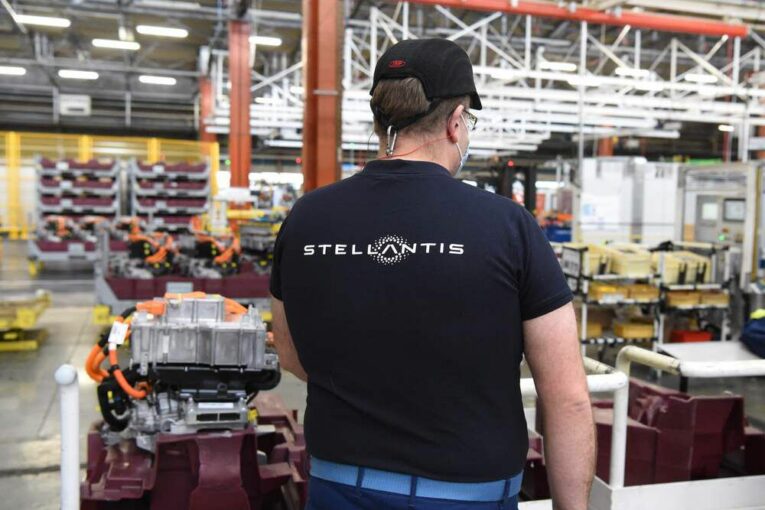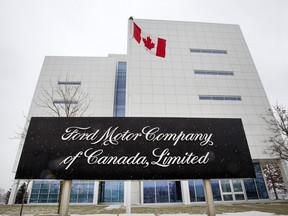
European automaker Stellantis N.V. and South Korean battery manufacturer LG Energy Solution said on Wednesday they will invest $5 billion in a joint venture to build Canada’s first electric vehicle battery cell manufacturing plant, located in Windsor, Ont.
It would stand out as among the largest, if not the largest, investment in the Canadian auto sector in the country’s history and is expected to receive significant, if still undisclosed, financial support from the federal and provincial governments.
The 4.5-million square foot battery plant is expected to support 2,500 jobs within a key segment of the auto supply chain, the battery, which is expected to supplant the internal combustion engine as the single most valuable component in a vehicle over the next two decades.
“The facility is quite staggering … about the size of 112 NHL hockey rinks,” said Mark Stewart, Stellantis’s chief operating officer for North America.
Stewart added the plant is aiming for annual production capacity in excess of 45 gigawatt hours, but declined to say how many batteries per year that would support. The company has said it wants 50 per cent of its vehicle production in North America to be zero-emission by 2030.
Construction on the plant is scheduled to start this year with first production in early 2024.
In the past, the federal government has come together with the provincial government to fund as much as 30 to 50 per cent of electric vehicle-related facilities. The Stellantis-LG plant is expected to receive significant funding and incentives from federal, provincial and local governments.
“I know between Ontario and Canada, we’re putting in hundreds of millions of dollars,” Ontario Premier Doug Ford said at a press conference on Wednesday morning. “I can’t divulge (how much), that would compromise negotiations with other companies going forward, but massive investment, hundreds of millions of dollars.”
Dave Adams, chief executive of the Global Automakers of Canada, a lobby group that represents Honda Motor Company Ltd. and BMW AG, among others, said the weight of batteries makes them expensive to transport. For that reason, many auto parts suppliers and other parts of the auto supply chain tend to invest in facilities near battery cell manufacturing plants.
“We can all take some solace now that Ontario has got that battery plant in the heartland of auto manufacturing,” said Adams.
We can all take some solace now that Ontario has got that battery plant in the heartland of auto manufacturing
Dave Adams
Reuters previously reported LG planned to invest US$1.5 billion in the plant and would own 51 per cent of the joint venture; Stellantis would own 49 per cent.
Previously in 2020, Stellantis committed to investing between $1.35 billion and $1.5 billion in a facility in the Windsor area, though a battery plant wasn’t specified.
Prime Minister Justin Trudeau, who was in Europe for a meeting with NATO allies, appeared in a pre-taped video congratulating Windsor and Ontario on attracting Stellantis, which said it would announce a second battery facility — to be located in the U.S. — within the next few weeks.
“Partnerships like these are critical to creating new jobs and putting Canada on the cutting edge of the clean economy,” Trudeau said.
Paired with announcements last week that General Motors Co. and BASF SE each plan to build $500-million battery cathode manufacturing plants in Quebec, the contours of a Canadian electric vehicle manufacturing industry are becoming visible.
In recent months, four out of the five automakers operating in Canada, including Ford Motor Company, General Motors, Toyota Motor Corp., and Honda, have disclosed plans to transition to electric vehicle manufacturing that involve building major plants in the U.S.
Auto plants in Windsor — separated only by a river from Detroit, the historical locus of U.S. auto manufacturing — have long been integrated with the U.S., but there had been no announcements to build a battery cell manufacturing plant in the city until Wednesday’s announcement.

Still, there has been some investment into plants in Canada to support an electric vehicle industry. In 2020, Ontario and the federal government each agreed to contribute $295 million, or $590 million in total support, so Ford Motor Company would commit to a $1.8-billion retrofit of an assembly plant for electric cars in Oakville, Ont.
In 2021, GM said it would invest $1 billion in facilities in Ingersoll, Ont., to produce its BrightDrop light duty electric commercial delivery vehicles.
But without its own battery manufacturing plant, the province’s auto industry was rocked by global supply chain disruptions caused by the pandemic, leading to semi-conductor chip shortages that resulted in shift cancellations and reductions at many plants.
There have been smaller investments into the battery ecosystem in Canada, however. In Quebec, the Lion Electric Company announced a $185-million battery assembly plant, supported by $100 million in total contributions from the federal and provincial governments.
But that facility would only import the battery cells to Canada and perform assembly in Quebec, in part because there was no significant manufacturing of cells taking place in the country.
The announcement that Stellantis — the company formed by the merger of Italy’s Fiat-Chrysler and France’s Peugot — and LG are building a battery plant in Canada caps months of negotiations between government officials and automakers.
During the past few months, industry insiders said Federal Industry Minister François-Philippe Champagne had travelled to Europe and the U.S. to meet with Stellantis executives and had further meetings in Canada.
“We have to be looking to the future,” said Stephen MacKenzie, chief executive of Invest Windsor-Essex, the local economic development corporation. “The auto industry is no exception … and we’re aggressively recruiting battery manufacturers.”
• Email: [email protected] | Twitter: GabeFriedz
You can read more of the news on source
